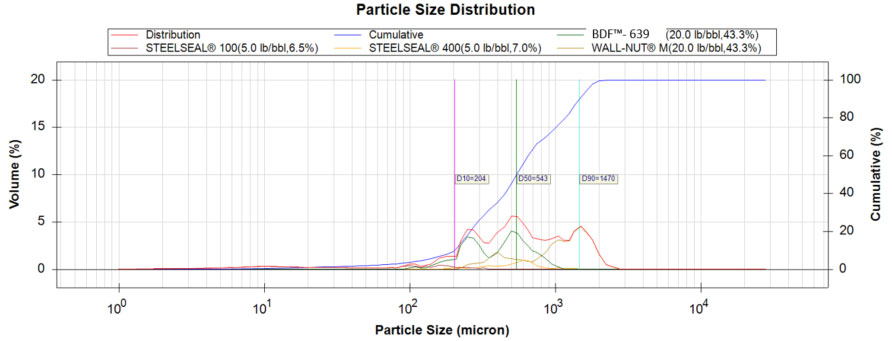 Search
Search
 Search
Search

WELLSET® software and BARABLEND™-639 lost circulation treatment help reduce downhole losses and enable quicker liner run, saving USD 63K per well
Download PDF
Habshan formation

Average of 900 bbl downhole losses during liner running and cementing operations
Design an effective fluid loss treatment plan, including:
A major operator in Oman was experiencing severe downhole losses of mud volume while running and cementing 7-in. liners in 8½-in. hole sections of wells drilled in the Habshan formation, characterized by naturally fractured limestone. From a 20-well study performed on the field, it was observed that losses mainly occurred when the equivalent mud weight (EMW) exceeded 1.40 SG across the Habshan formation. This only seemed to happen as a result of surge pressures while running the liner, or while circulating the liner prior and during cementing operations. Operational practices were optimized to minimize downhole pressures, but losses were still experienced, compromising operational efficiencies. The operator sought a technical solution to minimize downhole losses and improve efficiency.
The majority of wells in this field have experienced an average of 900 bbl downhole losses during liner running and cementing operations. Steps to eliminate losses, such as reduced liner running speeds and staging up circulation prior to cement jobs, were only partially effective and at the cost of operational efficiencies. The fracture size to which fluid was lost was unknown. The limited clearance between the liner and the open hole posed a risk of becoming bridged with particulates in cases where cuttings accumulated in the well. The objective was to increase running speeds and save rig time, while drastically decreasing downhole losses and increasing accuracy in cement placement.
Halliburton Baroid fluid experts collaborated with the operator’s fluids specialist to design and place a pill in the open hole to treat lost circulation issues. WellSET® software was initially used to determine the best particle mix to fit several fracture sizes. The proposed treatment plan consisted of BaraBlend™-639 lost circulation material, which is a sorted granular, tough particulate with low attrition under applied shear. This was supplemented with WALL-NUT® M, STEELSEAL® 50, and STEELSEAL® 400 additives to allow for tightly packed particles under compression in the fractures, without the risk of becoming dislodged or collapsing due to cycling of wellbore pressures. An optimized mixing and placement procedure was also recommended to ensure success.
The treatment formulation was qualified for application through plugging tests performed on 55µ and 120µ slotted inserts in a Particle Plugging Apparatus at 500 psi and 1000 psi differential pressure. The solution proved effective in plugging both slot sizes in the laboratory.

The BaraBlend™-639, WALL-NUT M, and STEELSEAL pill was spotted across the weak zone via the drilling assembly prior to tripping out of hole for the 7-in. liner run. A four-step hesitation squeeze was performed, reaching up to a maximum equivalent circulating density (ECD) of 1.52 SG, while monitoring the leak-off rate during shut in. Baroid’s Drilling Fluids Graphics (DFG™) software was used to model the optimal liner running speed to avoid exceeding 1.50 SG EMW across the weaker Habshan formation, which could only sustain 1.40 SG EMW prior to treatment on offset wells.
The implemented fluid loss treatment actually strengthened the Habshan formation, resulting in faster liner running speeds, which reduced the 8½-in. section flat time by 9.8 hours. Downhole losses were not observed during the liner run or subsequent cement operations. The operator saved a total of USD 23K in rig time and USD 40K in fluid cost. Due to this successful operation, the same approach will be used as standard procedure for the ongoing drilling campaign.
